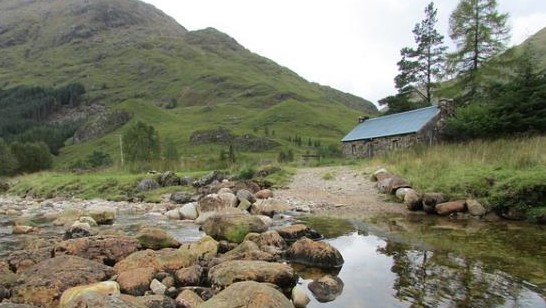
If you fancy buying an inexpensive off-grid getaway in Europe – try Scotland.
The government announced changes to their building regulations early this year. This will include huts of up to 30m² becoming exempt from regulations, specifically aimed at making it simple for people to achieve a life off the grid.
In a few months, you could be gazing out from a building like the one in the picture for less than $25,000 inclusive.
Scotland has a strong hutting culture dating back to the early 20th century; it was only 60 years ago that this began to dwindle. The largest remaining hut community in Carbeth, near Glasgow, managed to weather this decline. The community bought the land on which their 140 huts stand in 2013. But now resurgence is happening, thanks mainly to the campaign A Thousand Huts championed by the environment organisation Reforesting Scotland.
This organisation recognises the benefits of hut life, offering a retreat for rest, recreation, enjoying nature and making memories with family. Alongside use as a base for outdoor activities, huts contribute to sustainable development and encourage learning new skills. Reforesting Scotland have been lobbying for changes to the law for some time and are keen to encourage more people to adopt the hut lifestyle. Now changes to building regulations are being finalised this year, more people can benefit from having their own off-grid getaway.
Scottish planning (zoning) policy requires all developments to get planning permission for a new build from their local authority. This involves providing a description of plans on the chosen location. This part of the process will not change and will still have to take place.
However, single storey huts will no longer need a building warrant or have to comply with strict building regulations. This gives hut builders more freedom in how they build their huts and can significantly reduce building costs. There are still some rules which will have to be met.
Firstly, the build must fit the description of a hut as given in Scottish Planning Policy documents, which is as follows:
“A simple building used intermittently as recreational accommodation, having an internal floor area of no more than 30m²; constructed from low impact materials; generally not connected to mains water, electricity or sewage; and built in such a way that it is removable with little or no trace at the end of its life.”
By restricting size, the risk of structural instability of the hut is reduced but its energy efficiency is maximised.
Secondly, some health and safety regulations will have to be met, for example relating to fire risk and spread. A guidance document outlining these will be published by Reforesting Scotland later this year.
The Scottish Government has also allowed provision for a sleeping platform and amenities such as composting toilets within the hut. In terms of energy use and production, off-grid solutions such as solar panels and micro wind turbines are most desirable, however these are location dependent.
There are hutting cultures in other locations, such as the Scandinavian countries. However, these seem to be growing in size and elaborateness. The aim of this policy development in Scotland is to take people back to basics and off the grid.
More information can be found here:
www.thousandhuts.org/wp-content/uploads/2016/02/160215-Huts-Guidance-FINAL-screen-res.pdf
A Guide to the Planning System in Scotland can be found here:
3 Responses
Truly useless if you’re not allowed to live in it full time.
ES misses the point. Huts are for intermittent recreational use, to escape the hurly burly of everyday life. If you want somewhere cheap to live in all the time, buy a small house or change the system.
Not at all. Many families in Scandinavia own a hut in forest or island, a place to spend time in summer, to gather berries in season, to be in nature and reconnect with a simpler way of life. In Scotland the traditional ‘shelling’ was used only in summer, while cattle grazed high pastures and people made cheese and enjoyed the brief northern summer. Hutting culture comes from this tradition. It’s not the same as the ‘tiny house’ movement and the legislation is not aimed at relieving housing pressures. That is a different issue that certainly needs addressing in the UK as a whole, but a ‘hut’ is not intended to be a permanent home.